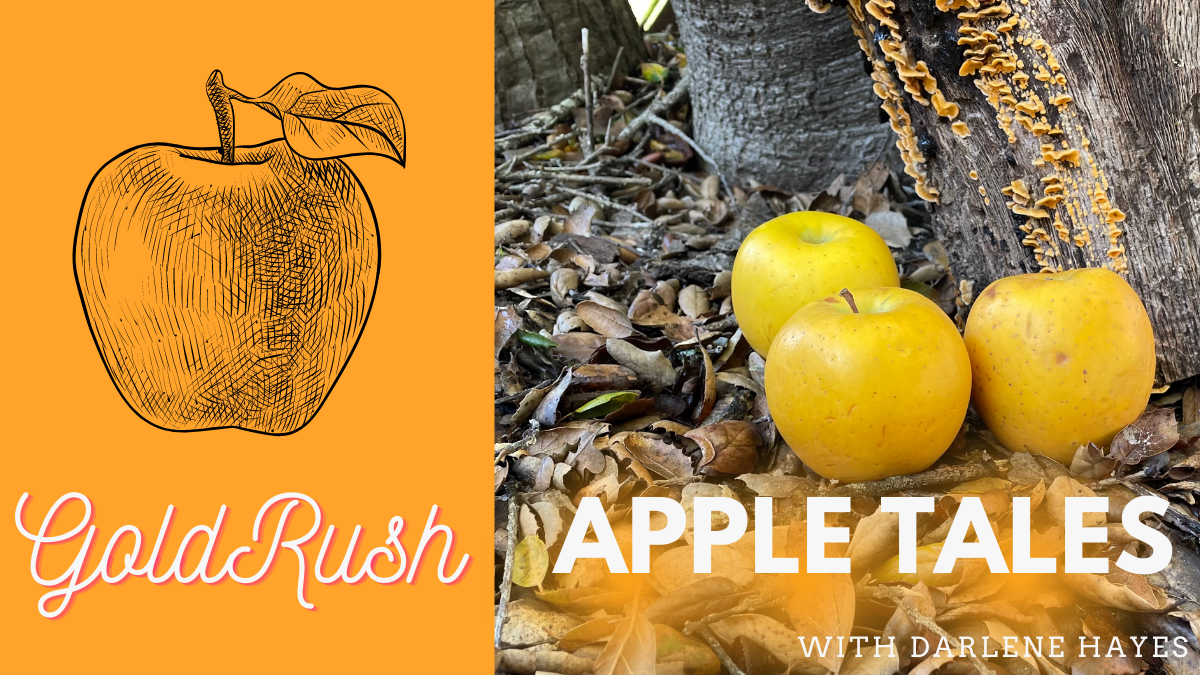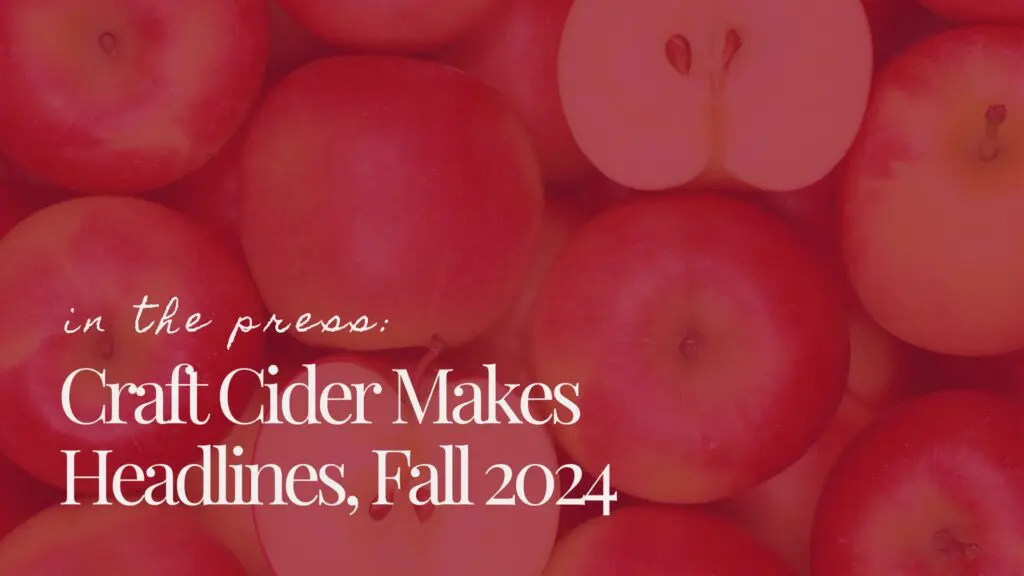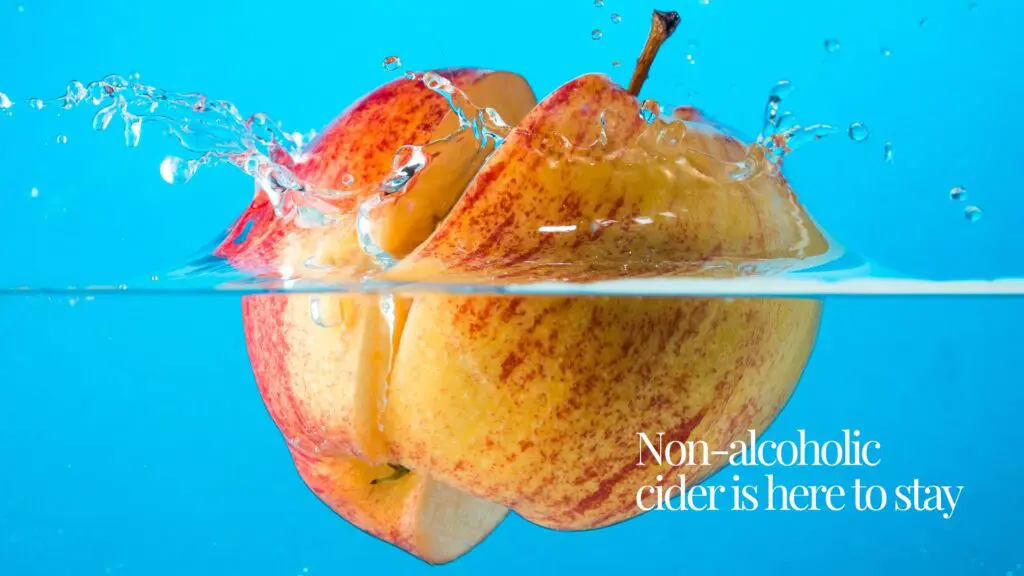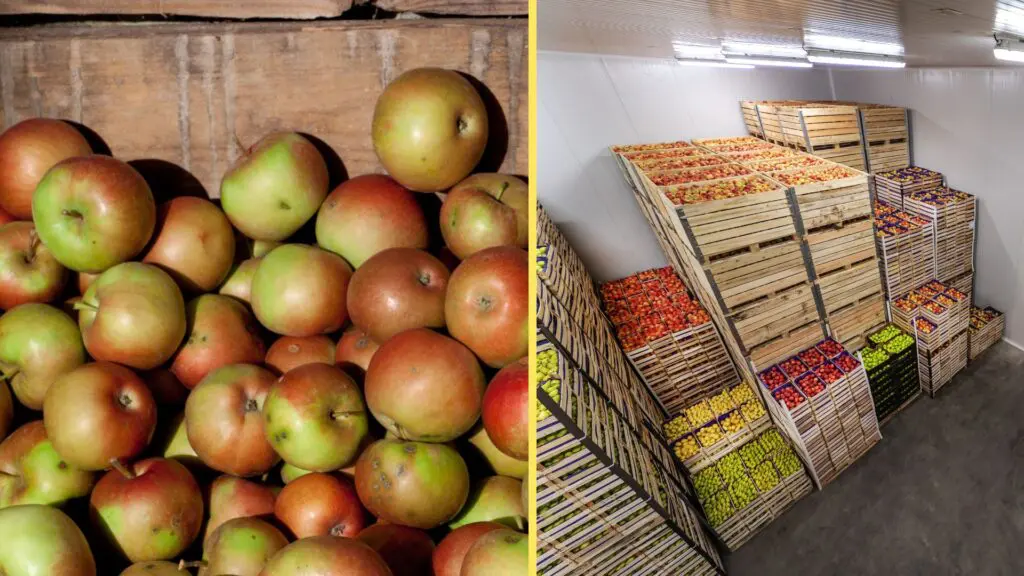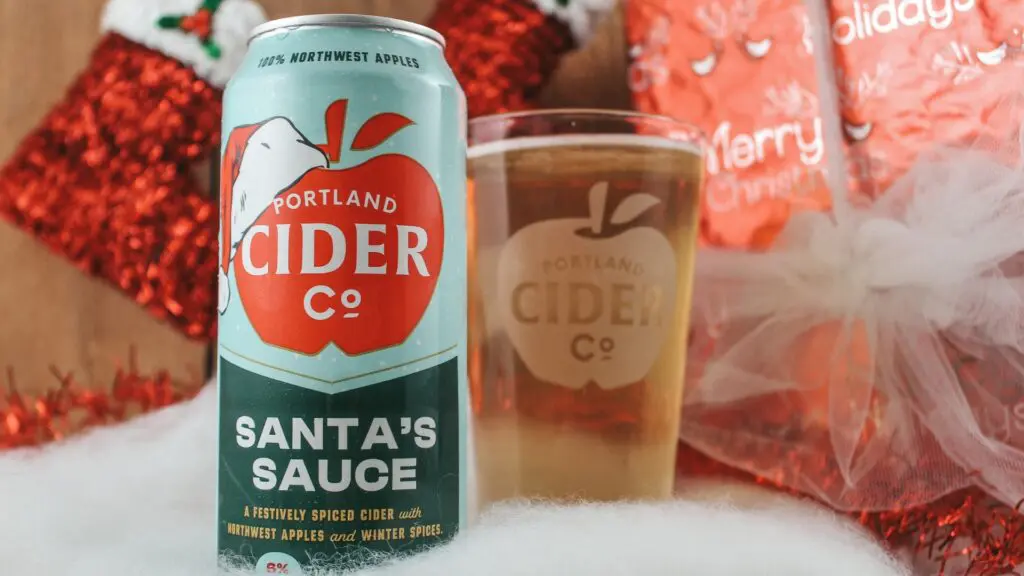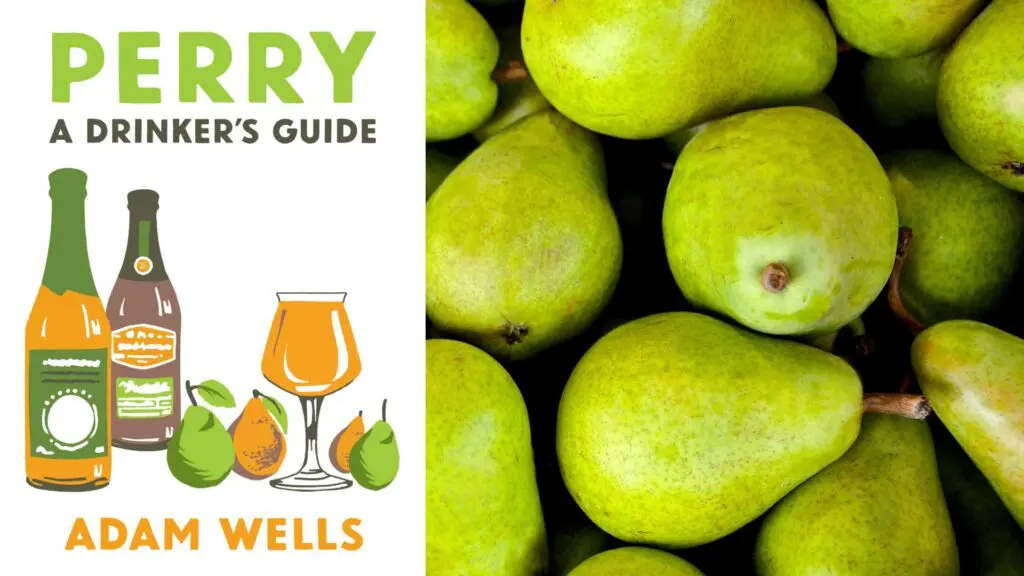Apple Tales with Darlene Hayes
So many of the apple varieties that come up in conversation when talking about cider have long histories, occasionally well documented, but more often not. GoldRush is different. It is a thoroughly modern fruit, the product of focused 20th century science.
Up until fairly recently, new apple varieties arose solely by chance, created at random by busy insects. Although humans have for millenia been singling out and perpetuating plants with traits that they liked, the idea that one could selectively breed new cultivars didn’t arise until the 18th century in the wake of the Scientific Revolution. As science came to a better understanding of the mechanism of inheritance, that knowledge was enthusiastically applied to the creation of new and improved apples. GoldRush came out of a program seeking to create cultivars resistant to apple scab.
Apple scab is caused by a fungus. It blights both the fruit and the leaves; the latter die and fall off while the former become blemished, unsightly and unsaleable. Cosmetics might not be such a big deal for fruit that is intended for the cider mill, but if the leaf drop is severe enough over successive years scab can end up killing the tree. There are sprays, of course, but fungicides have their own potential issues, notably costs for both the grower and the environment.
It is with these things in mind that a group of scientists got together to breed new scab-resistant apples. It started in 1945 as a collaboration between scientists at Purdue University, the University of Illinois and, later, Rutgers, the University of New Jersey. Apples developed by the program are known by the acronym PRI. It started with the observation that the crabapple, Malus floribunda produced progeny that were resistant to scab. The scientists made hundreds of crosses with M. floribunda, and then with its children, and came up with any number of apples that were then released commercially.
The seed that became GoldRush was first planted in May 1973 at Purdue’s research farm from a cross made with Golden Delicious and Co-op 17, a great-great-grandchild of one of the original M. floribunda cultivars (new varieties deemed worthy of additional study were given the identifier Co-op plus a number. GoldRush was Co-op 38). It took seven years to determine that the seedling was interesting enough to pursue further and released for advanced testing. By the time it was finally introduced to commercial nurseries in 1994, GoldRush, as it was now known, had been evaluated at Purdue and Rutgers, and by private growers around the country, as well as in Bologna, Italy.
GoldRush, named for its golden color and “rush” of flavor, had, and has, a lot going for it. It bears fruit every year if not overcropped, and it’s a good size, an important consideration for an apple destined for the fresh market, as is its ability to store for up to seven months without losing quality. It has a firm, crisp texture, and what has been described as a spicy, rich, full flavor and sprightly acid, both of which are attractive to cidermakers. Though its intended destiny was the local supermarket, GoldRush has found a home in many a cider program as well, especially on the East Coast where it is the most widely grown.
That acid and rich flavor was on full display in the ciders I tried recently, all of which exhibited a range of tropical fruit notes in amongst the flavors of citrus and flowers. A few had been aged in oak, and while the notes of vanilla were a nice touch, the oakiness did seem to play down the primary fruit flavors a bit. Two ciders in the group were at least five-years-old and still going strong, all that acid helping them to age quite gracefully. For those of you thinking you want to avoid a cider with any residual sugar, keep in mind that a little can be just what an acidic cider needs to achieve the right balance.
Wise Bird Cider – Lexington, Ky.
Semi-dry; pine, pineapple, lime, lemon, green herbs, honeysuckle, passionfruit; sparkling;
2019 | 6.7% ABV
Albemarle Ciderworks – North Garden, Va.
Dry; lime, grapefruit, lemon, pineapple, green apple, pear, ripe peach, nutmeg, pine; sparkling
2017 | 9.9% ABV
Ploughman Farm Cider – Aspers, Pa.
Dry; vanilla, pine, pineapple, lemon, lime, cedar, green apple, sweet orange; sparkling
2019 | 7.3% ABV
Westwind Orchard – Accord, N.Y.
Semi-dry; vanilla, pineapple, rose, lemon, slightly feral, VA; sparkling
2016 | 7.4% ABV
Manoff Market Gardens & Cidery – New Hope, Pa.
Dry; vanilla, coconut, lemon, lime, wood, apple skin, pineapple pith; sparkling
2019 | 8.5% ABV
ANXO Cidery – Imperial Blanc – Washington, D.C.
Dry, lemon, lime, pineapple, lychee, melon, VA; sparkling
2020 | 8.3% ABV

